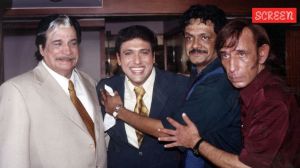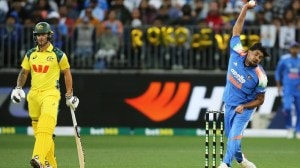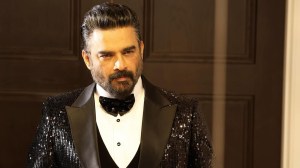Stringing it Together
It was one reason why he decided at an early age not to be a puppeteer and became a wood carver instead. That, and the fact that ‘‘...

|
Puran Bhatt
Puppeteer |
THE Kathputhali colony in the Capital is a bewildering maze of narrow congested streets and bottled-up talent. Men play complicated tunes and show off their juggling while handing you bio-datas, detailing their various trips abroad, even as flies choke the open drains and settle on their sleeping children.
You negotiate your way to the centre of the colony, where 46-year-old puppeteer Puran Bhatt sits on his balcony, chiselling away. He is making two sets of puppets — one for a puppetry festival of contemporary performers in Delhi in mid-September and the other for a solo traditional performance of the Rajasthani legend Dhola Maru. ‘‘I am beyond these classifications of tradition and modern. I have managed to make that crossover,’’ he says, well aware that he is one of the few from the his community to do so.
His son Ajit readies a splendidly wicked-looking witch (she can flip over and become a beautiful woman) for Dhola Maru while Bhatt finishes work on a 12-stringed magician, an incorrigible show-off who is always unscrewing various parts of his body. ‘‘We, the Bhatts, come from Nagore, which was also the home of Amar Singh Rathore, Akbar’s celebrated soldier. That is why his gatha is our most popular item. But it also seems to be the only story we narrate,’’ says Bhatt.
“Do you know why our puppets are famous? Because we are the only ones in the world who manipulate them without a cross (a wooden stick through which the strings pass giving the puppeteer more control). We just tie all the strings into one knot and use only our hands,” he explains. Ironically for Bhatt, the turning point came after watching contemporary puppeteer Dadi Padamjee perform in 1982. He decided to return to his ancestral profession, only to combine it with the contemporary sensibility around him.
How does he define contemporary sensibility, you ask. Bhatt smiles and gives you an example, ‘‘Like in Dhola Maru, I am bringing in new elements. The traditional snake, for example, is a small one and the camel is also smaller than the characters and cannot move his legs. But I am going to introduce a three-feet-long rod puppet snake who can swallow other puppets and a big camel that will run on stage carrying his master.’’ His contemporary sensibility is also visible in his 1997 production Carvaan, which focused on the lives of the Bhatts themselves. ‘‘Everyone was thinking about the old stories and I said why not tell our own — how we began with patronage from kings and how today we are nothing,’’ he says.
‘‘I finally realise that there is no difference between traditional and contemporary puppeteers. It is just that we will do anything for survival. If we do not get Rs 1000, we do it for Rs 50. That is what sets us apart — our circumstances,’’ he says.
It is time for him to put away the puppets he is making and plan his collaborative piece with Padamjee for later this year in London. Their last musical production, Dialogues, was a resounding hit. ‘‘All said and done, the traditional form has real strength. One only needs the eyes to see it,’’ he reiterates quietly.





- 01
- 02
- 03
- 04
- 05


























